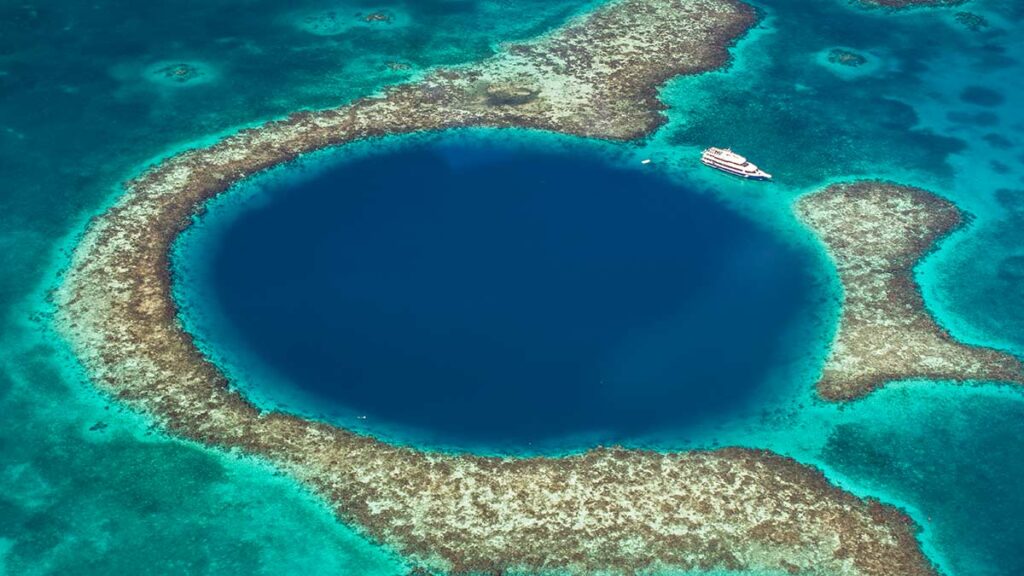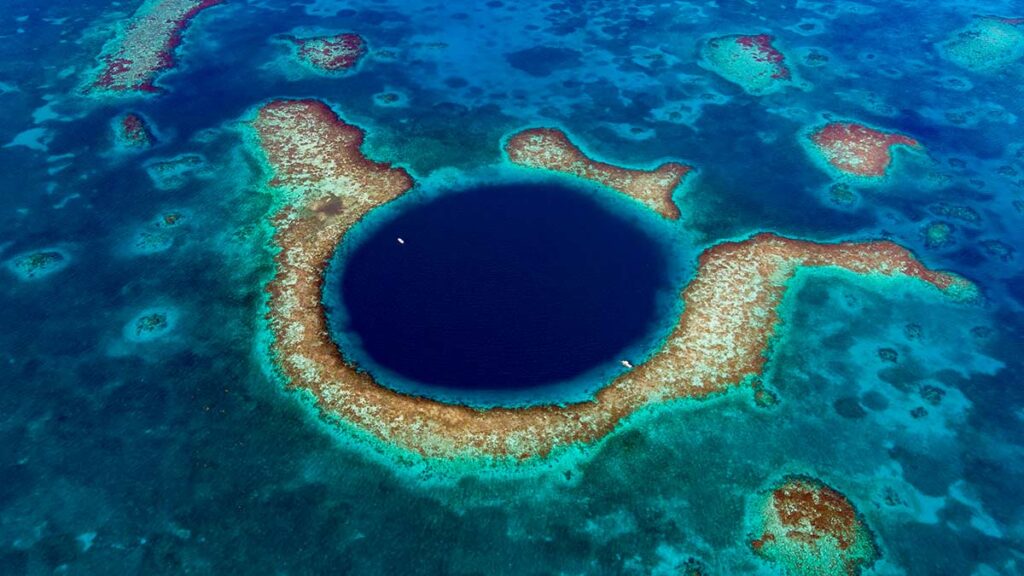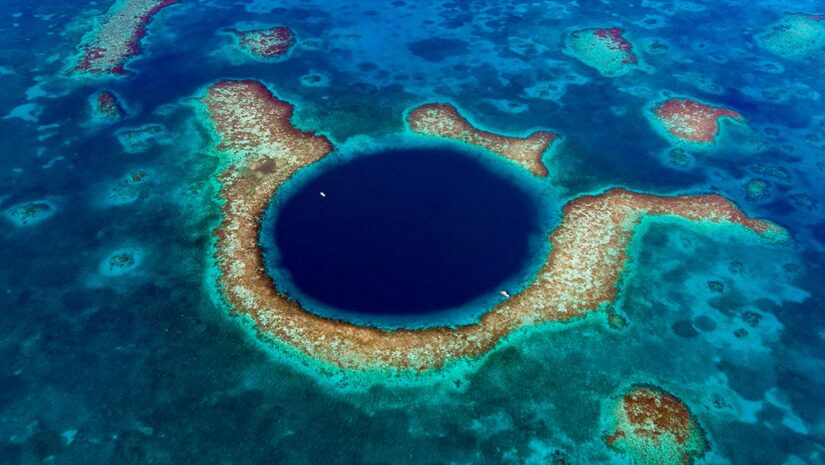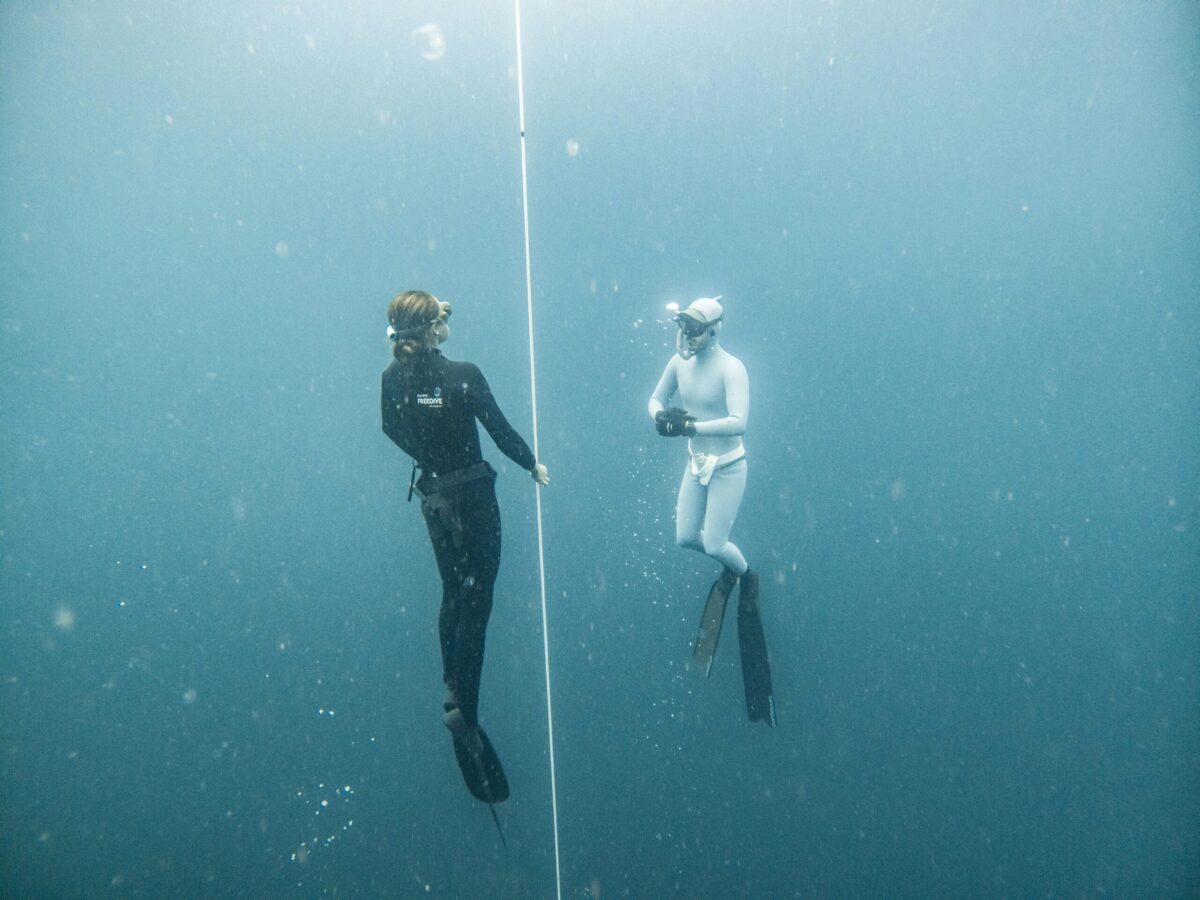Blue holes are instant attractions to scuba divers. Often termed as dangerous dive sites, the blue holes around the world still continue to draw divers from all over into their inky blue depths. So how exactly have these massive holes in the Earth come to be and what makes Blue Hole Diving such a thrilling experience? Let’s take a look.

What is a Blue Hole?
Blue holes are essentially sinkholes in the surface of the Earth but are submarine. They can also be classified as vertical caves. Called so for the dramatic contrast between the dark blue deep waters of their depths and the lighter blue of the shallows around them, Blue holes are roughly circular in shape and have very steep walled depressions.
Blue Holes are formed as a result of several erosional processes, including:
- High and low sea level stands associated with glacial (ice ages) and inter-glacial periods.
- Chemical dissolution of the calcium carbonate due to carbon dioxide-laden rain- water percolating down through the limestone.

Why You Should Try Diving a Blue Hole
For most part it’s the sheer experience of diving in a seemingly bottomless pit that makes Blue Hole diving appealing to divers. Unlike usual dives where you’re looking at the bottom for fish, coral and the likes, while blue hole diving your focus is the walls of the vertical cave. A glance above and you may see the shimmering surface but down below all you see is a fade from dark blue to black.
There isn’t much marine life to be observed the deeper you go. Most times you’ll notice sharks lurking in the depths while coral formations and smaller fish are restricted towards the top where there’s more sunlight and circulation. A major attraction of Blue Holes is most often the limestone stalactites and stalagmites formed due to chemical weathering, sometimes creating caverns.
Diving Blue Holes requires divers to be experienced in deep diving. The almost infinite bottom can often be disorienting and a constant check on depth is necessary. Many divers experience Nitrogen Narcosis which can have dire consequences when diving at such depths. Good buoyancy control is also recommended as ballooning is equally deadly to ones health while ascending from a deep dive. Divers, even some of the most experienced ones that have tried testing their limits while diving blue holes have made those their last dive, a reminder that the utmost vigilance and care must be taken for anyone who wishes to dive in a blue hole.



